
Earl of Buckinghamshire is a title in the Peerage of Great Britain. It was created in 1746 for John Hobart, 1st Baron Hobart.
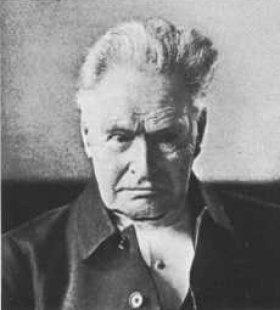
Baron Grimthorpe, of Grimthorpe in the East Riding of the County of York, is a title in the Peerage of the United Kingdom. It was created on 17 February 1886 for the lawyer and architect Edmund Beckett, 5th Baronet, with remainder to the heirs male of his father. He was succeeded according to the special remainder by his nephew, the second Baron. He had earlier represented Grimsby in Parliament. As of 2014 the titles are held by the latter's great-grandson, the fifth Baron, who succeeded his father in 2003.

Baron Savile, of Rufford in the County of Nottingham, is a title in the Peerage of the United Kingdom. It was created in 1888 for the diplomat Sir John Savile. He was the eldest of the five illegitimate children of John Lumley-Savile, 8th Earl of Scarbrough, and the grandson of John Lumley-Savile, 7th Earl of Scarbrough. The latter was the fourth of the seven sons of Richard Lumley-Saunderson, 4th Earl of Scarbrough, and his wife Barbara, sister and heiress of the politician Sir George Savile, 8th and last Baronet, of Thornhill, who bequeathed the substantial Savile estates in Yorkshire and Nottinghamshire to his nephew the Hon. Richard Lumley-Saunderson, later 6th Earl of Scarbrough. On his death the estates passed to his younger brother, the aforementioned seventh Earl, and then to his son the eighth Earl. The latter bequeathed the estates to his second natural son Captain Henry Lumley-Savile. When he died they passed to his younger brother Augustus William Lumley-Savile (1829–1887) and then to his eldest brother, the aforementioned John Savile, who was created Baron Savile the following year.
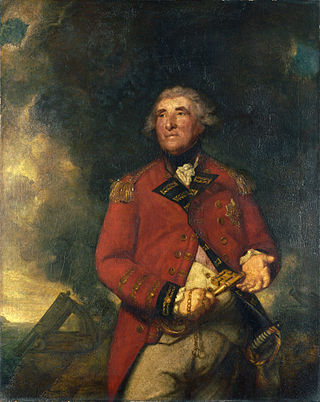
George Augustus Eliott, 1st Baron Heathfield, was a Scottish officer of the British Army, who served in three major wars during the eighteenth century. He rose to distinction during the Seven Years' War when he fought in Germany and participated in the British attacks on Belle Île (France) and Cuba. Eliott is most notable for his command of the Gibraltar garrison during the Great Siege of Gibraltar, which lasted from 1779 and 1783, during the American War of Independence. He was celebrated for his successful defence of the fortress and decisive defeat of Spanish and French attackers.

Lympstone is a village and civil parish in East Devon in the English county of Devon. It has a population of 1,754. There is a harbour on the estuary of the River Exe, lying at the outlet of Wotton Brook between cliffs of red breccia. The promontory to the north of the harbour is topped by a flat pasture, Cliff Field, that is managed by the National Trust and used for football matches and other local events.
There have been two baronetcies created for a person with the surname Clifford.
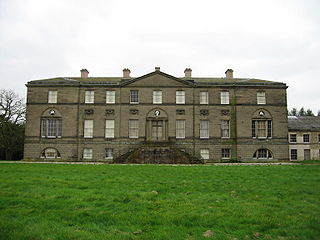
The Broughton, later Broughton-Delves, later Broughton Baronetcy, of Broughton in the County of Stafford, is a title in the Baronetage of England. It was created on 10 March 1661 for Sir Brian Broughton, of Broughton Hall, near Eccleshall, Staffordshire, High Sheriff of Staffordshire from 1660 to 1661 and the member of an ancient Staffordshire family.

The Eliott Baronetcy, of Stobs in the County of Roxburgh, is a title in the Baronetage of Nova Scotia. It was created on 3 December 1666 for Gilbert Eliott. The second baronet was a member of the pre-union Parliament of Scotland. The third Baronet sat as Member of Parliament for Roxburghshire. The Eliott Baronets share a common early Elliot ancestry with the nearby Earls of Minto (Elliot). It is thought that the surname spelling differences were contrived to differentiate the branches.
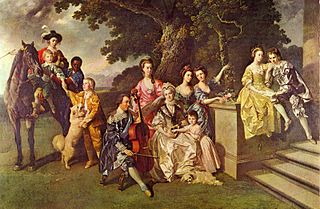
There have been five baronetcies created for persons with the surname Young, one in the Baronetage of England, one in the Baronetage of Great Britain and three in the Baronetage of the United Kingdom. As of 2014, four of the creations are extant.

Charles Dillon-Lee, 12th Viscount Dillon, KP, PC (Ire) (1745–1813) conformed to the established religion in 1767 and inherited Ditchley in England from his mother.

Heathfield Park is an English country house and walled park in the village of Old Heathfield in East Sussex.
Elliot is a personal name which can serve as either a surname or a given name. Although the given name has historically been given to males, females have increasingly been given the name as well in the United States.
Sir Thomas Trayton Fuller-Eliott-Drake, 1st Baronet (1785–1870) was a British Army officer.
The Fuller-Eliott-Drake Baronetcy, of Nutwell Court, Buckland Abbey, or Monachorum, Sherford, and Yarcombe in the County of Devon, was a title in the Baronetage of the United Kingdom. It was created on 22 August 1821 for the soldier Thomas Fuller-Eliott-Drake, with remainder in default of male issue of his own to his next two younger brothers, William Stephen Fuller and Rose Henry Fuller, and their male issue. Born Thomas Fuller, he was a grandson of George Augustus Eliott, 1st Baron Heathfield, and grand-nephew of the last Drake Baronet of Buckland, and adopted the additional surnames of Eliott and Drake upon his inheritance of Buckland Abbey and Nutwell Court from the second Lord Heathfield in 1813. He was succeeded according to the special remainder by his nephew, the second Baronet, a son of the younger of his two brothers, who had also adopted the additional surnames. The title became extinct upon his death without a male heir in 1916. The second Baronet's only child married the third Baron Seaton, who also adopted the Eliott and Drake surnames.

Sir Mordaunt Martin, 4th Baronet was son of Sir Roger Martin, 3rd Baronet and Sophia Mordaunt. He inherited his baronetcy from his father, who was the third Martin Baronet, upon his death in 1762. He lived in Burnham Market in Norfolk
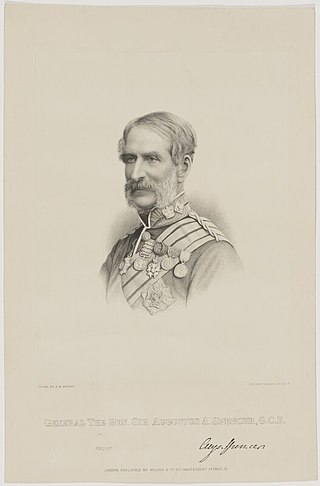
General The Hon. Sir Augustus Almeric Spencer was a British Army officer and a member of the Spencer family.
Sir Gilbert Eliott, 3rd Baronet, of Stobs was a Scottish Whig politician who sat in the British House of Commons between 1708 and 1727. He was outlawed after killing his opponent in an after-dinner argument and fight, but was subsequently pardoned.

The Eliot family is a British aristocratic family whose members include earls, barons, counts, knights, governors, peers, and Members of Parliament. The main factions are the Earls of St Germans and the Eliot Military Family, which encompasses the Count Eliots.
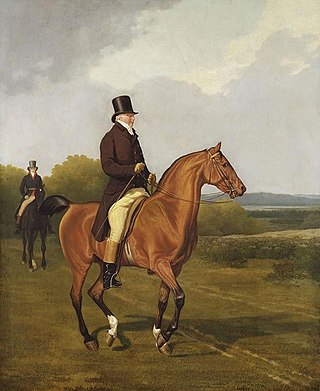
General Francis Augustus Eliott, 2nd Baron Heathfield was a senior British Army officer.
Governor Eliot, Elliot, or Elliott may refer to:














